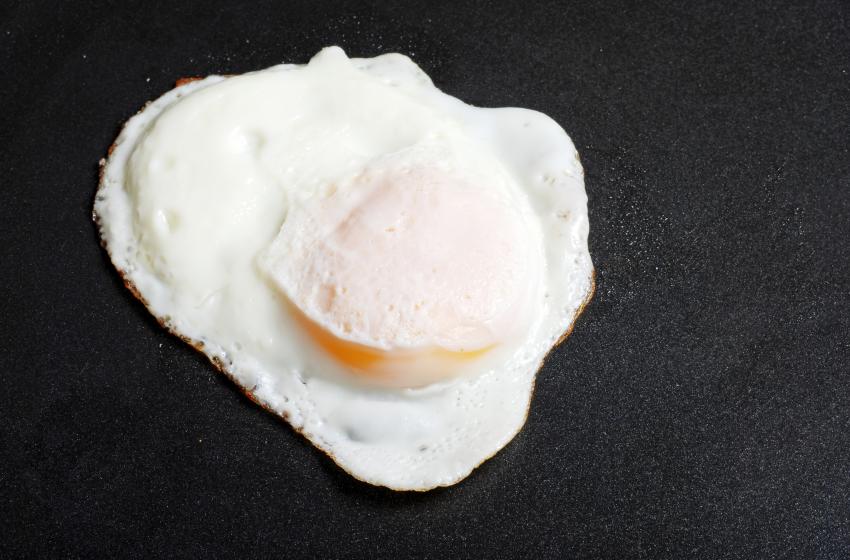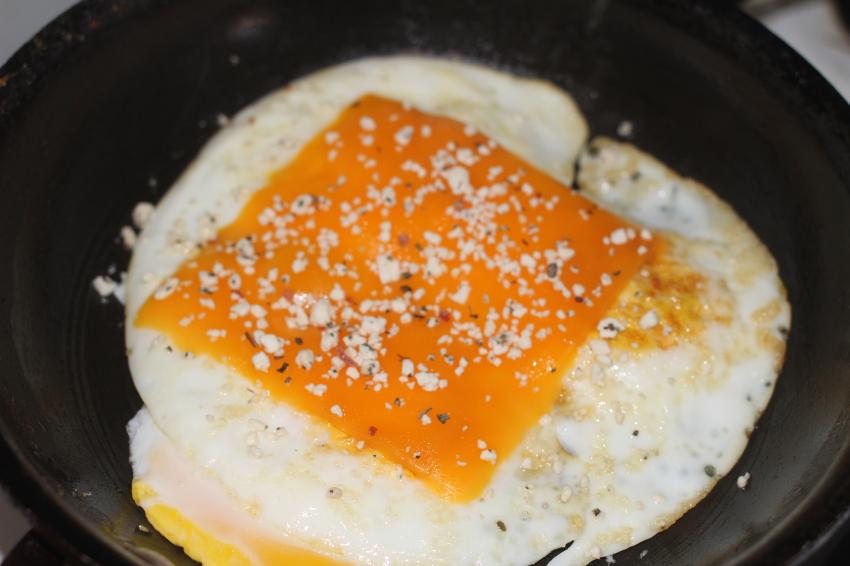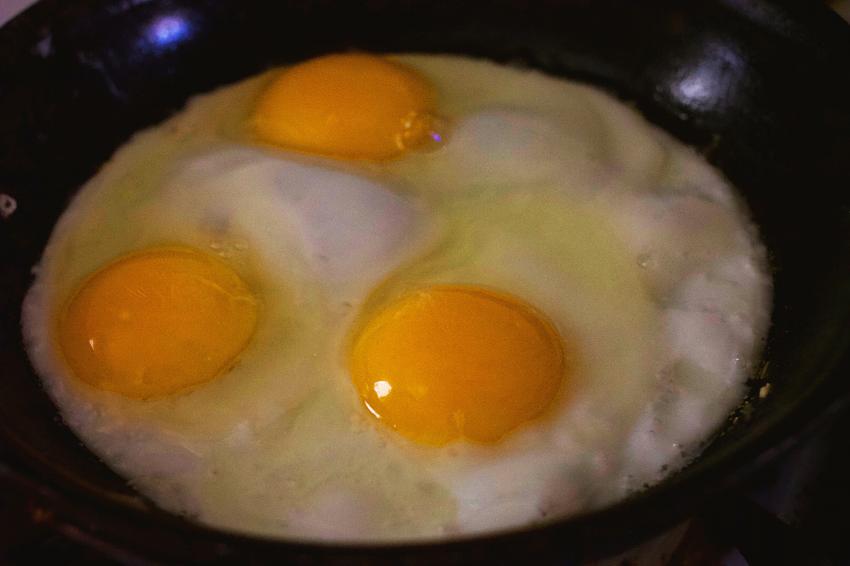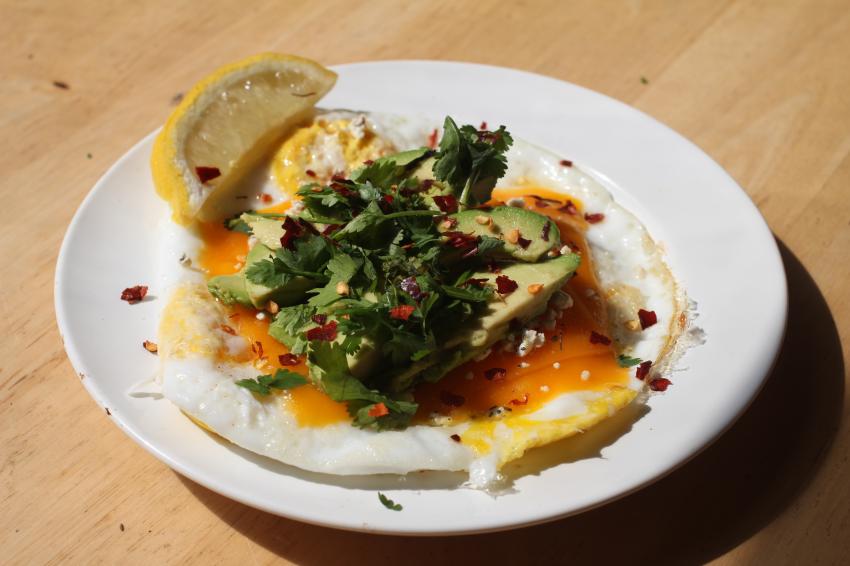How To Make The Perfect Over Easy Eggs Every Time

Eggs are one of my favorite components of breakfast. Soft cooked egg whites harboring a voluptuous sphere of velvety egg yolk is a morning treat.
Mix them with some hash browns or squeeze them between two pieces of toast for a breakfast sandwich; eggs are a versatile food spanning beyond breakfast.
Used as a sort of culinary adhesive, eggs are widely used in baking and breading food to fry.
Some cultures even eat eggs raw.
The United States isn't the best country for egg consumption. Our factory farming outfits produce eggs clearly unsafe to eat raw without the risk of catching salmonella.
In Japan, however, they hold their eggs to a higher standard.
The American Youtuber What I've Learned has lived in Japan for quite some time. He made a video on Japan's different kinds of eggs, most notably a $70 carton of eggs.
Eggs are popular in America, but that popularity has declined since World War 2.
Americans used to eat around 400 eggs annually before the war. In the decades following, studies were published on eggs and their rich cholesterol content contributing to heart disease.
As a result, egg consumption began to decline. Now, that pre-war egg consumption statistic has been slashed in half in the present day.
Studies during this time span argued that eating too many eggs will result in a high cholesterol intake causing an increased risk of heart disease.
In reality, consuming a high amount of cholesterol doesn't necessarily mean eating a large portion of eggs every day will give you heart disease.
According to John Hopkins Medicine, your body produces all the cholesterol you need. So if you eat a high volume of cholesterol-rich foods, like eggs, your body will just produce less cholesterol as your consumption suffices the body's need.

As a Chef in multiple diners over a span of four years, I have worked closely with eggs for quite some time.
Eggs are delicate to cook. One little stick to the pan or too high of heat can have you making a new batch of eggs or turning them into a scrambled dish.
But you're not here for scrambled, you're here to see how to cook the perfect over-easy eggs every time.
Now, let's cook some breakfast.
What you'll need
- Non-stick pan
- Rubber spatula
- Oil/butter
- Eggs (of course)
Non-stick pan
A non-stick pan is essential to perfectly cooked eggs.
There are many qualities of non-stick. Cheaper pans made of Teflon will only give you true non-stick for only a few uses, especially if you use steel utensils.
My advice would be to either use a griddle or a hard-anodized aluminum cooking pan.
Hard-anodized pans are made of durable aluminum that conducts heat more efficiently. Although there is no "non-stick" coating, these pans provide non-stick without.
Without the worry of chipping the coating, these pans will give you non-stick cooking with every use.
An 8-inch hard-anodized aluminum cooking pan is the perfect size to cook 3 over easy eggs with ease.
Rubber Spatula
The rubber spatula is an underrated kitchen utensil. It aids in getting every bit of batter in baking and provides a gentle lift to fragile foods-like eggs.
A small rubber spatula is a useful tool while eggs are cooking, providing a delicate lift to the eggs negating edges sticking to the sides of the pan.
Oil/ butter
Oil or butter is necessary for making eggs. Even a non-stick pan won't save you from eggs becoming super-glued sometimes.
Olive oil or butter will give you enough lubrication to give you a slick, easy heat that will keep your eggs free to move around.
Getting Started
Now that you have the tools, let's get it cracking,
Keep in mind, though, the process of cooking over-easy eggs is as delicate of a process as the eggs themselves.
Heat-low and slow
It is important to keep the heat in the pan under control. Throwing your burner on high and keeping it at that level will produce disastrous results, especially cooking eggs.
Every stovetop produces different levels of heat so use your best judgment when heating your pan.
Essentially, no matter what eggs you're making, the term low and slow is the way to go.
The ideal stove top-level is medium to medium-low heat.
Oil every inch of the pan
Add your oil or butter right after turning on the burner, be sure to tilt the pan every which way to coat entirely.
Having a patch of your pan without oil blanketing that area will throw you into a sticky situation.
I remember when I first started cooking in diners. I would have to be there by 5 AM to open at 6 AM. One of the main things upon opening almost any restaurant is warming up the flat top.
If you don't know already, even with rubbing oil after cleaning a flat top for closing, it will still become sticky in the morning whilst warming it up.
A lot of my first customers of the day had to wait an extra few minutes at times since every first egg I cracked on the flattop would automatically stick, even with some oil under it.
At my worst, I went through over ten eggs just to get a pair of over-easy eggs to cook properly.
So when it comes to cooking eggs, oil is their best friend.
Crack eggs right away
You may think that waiting till the pan is at peak heat to crack your eggs is the right thing to do; on the contrary, it is not.
Once you have the oil coating the pan, crack your eggs right away.
Doing this will give time for the raw eggs to acclimate with heat instead of flash-frying instantly on contact, causing sticking.
Cracking eggs in the pan as it warms up provides a less sharp temperature change, allowing the egg whites to cook evenly.
This produces soft and supple, but fully cooked egg whites when finished.
Use your rubber spatula to prevent sticking
Even after all my anti-stick tools and advice mentioned above, you'd think you will never have a sticky egg from here on out. Well, guess again.
Eggs will stick albeit the precaution you take to prevent it.
That's where a rubber spatula comes in.
The rubber spatula will provide you a tool to slip under the eggs and find that nagging sticky spot.
Take the rubber spatula and run it along the edge of your eggs to find any sticky spots.
If the sticky part is in the middle of the pan, find the edge of the eggs closest to the stick and slide the rubber spatula under. You can jar the sticky part loose with a smooth push, which will get the egg unstuck without breaking the yolk.
To find which part is sticky, simply grab the handle of your pan and lightly swirl it in a circular motion.
If your eggs are cooking properly, then you won't have a problem. If your eggs are sticky, however, this circular motion will expose that troublesome spot.
Take the pan off the burner after flipping eggs
Now that your eggs are cooking low and slow on an oiled-up pan, now it's time to talk about the final process of making the perfect over-easy eggs.
Once the eggs white lose their translucence on the bottom, it's time to flip.

Now if you are skilled enough and the eggs are not sticking to the pan, you can flip the eggs without a spatula-like you would pasta.
Careful though, flipping eggs like this comes at a risk of breaking the yolk upon landing.
Alternatively, grab the handle of your pan in one hand and your rubber spatula in the other.
Start to slowly tilt the pan so the eggs begin to slide to the edge.
Take the rubber spatula and slide it under the eggs.
With a light flick of the wrist, flip the eggs back onto the pan.
Now, you won't need your burner anymore. You may think, "Doesn't the other side need to cook?"
Well, yes it does. And with the residual heat, it will.
Residual heat provides the right temperature to fully cook the other side of the egg white with the yolk. The mild heat cooks the remaining egg whites delicately finishing the membrane of the yolk without overcooking it.
The eggs will only need a minute or less of residual heat to properly cook the other side.
Over-easy eggs made easy
There are many ways to cook eggs such as over-easy, over-medium, over-hard, sunny-side up, basted, poached, boil, etc.
Over-easy eggs may be the middle of the road when it comes to difficulty, but with these tools and methods, you can make soft, silky over-easy eggs easily.

